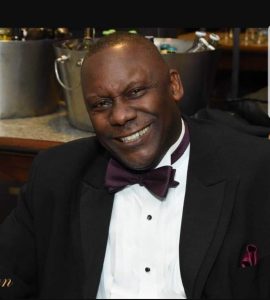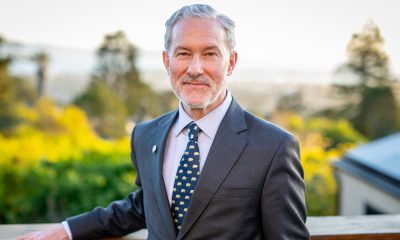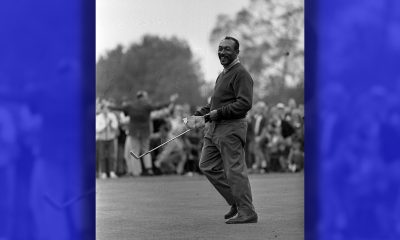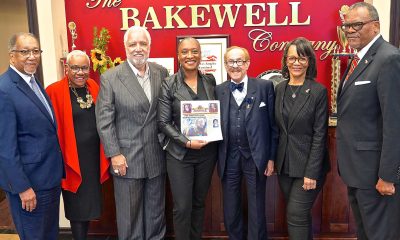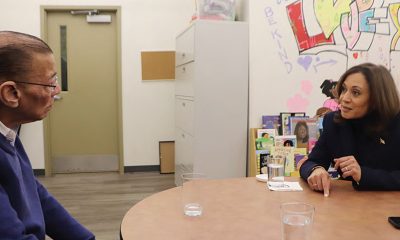Family
Youth Work the Runway in Kids Fashion Week DMV
THE AFRO — The inaugural Kids Fashion Week DMV, held April 12-14, celebrated the style, skills and “slays” of youth in the Washington Metropolitan area, and allowed designers who specialize in children’s clothing to showcase their work on the runway.
By Micha Green
The inaugural Kids Fashion Week DMV, held April 12-14, celebrated the style, skills and “slays” of youth in the Washington Metropolitan area, and allowed designers who specialize in children’s clothing to showcase their work on the runway.
Kids Fashion Week DMV, co-founded by movers and shakers, Akilah Clark, Crystal Davis and Auntea Marie, is a nonprofit organization that places an emphasis on the success of talented children by being, “for kids and by kids.”
“We are focused on assisting professional kids meet their entertainment-based career goals by providing development and exposure opportunities,” according to a statement sent to the AFRO by Auntea Marie, publicist, producer and co-founder of Kids Fashion Week DMV.
Per its mission to give exposure to youth, Kids Fashion Week DMV offered programming throughout the weekend to allow children and their parents to network with entertainment industry professionals, including performers, models, designers, photographers and members of the media.
Kids Fashion Week DMV kicked off with the “Next Level Networking Ice Cream Social,” at Jeni’s Splendid Ice Cream, 1925 14th Street N.W. There, attendees were treated to an unlimited ice cream party.
Further perpetuating the desire to give back, day two of Kids Fashion Week DMV hosted “Work Hard, Play Hard,” which offered free workshops for young people interested in entertainment at the Patrick Henry Rec Center in Alexandria, VA. Some of the workshops included, media training, creative writing, sewing, fashion design, acting and brand development, and students were further entertained with contests, giveaways, food, music and performances.
Under the theme, “Fierce and Fancy,” Sunday’s runway show was the highlight of the Kids Fashion Week DMV experience, where young people strutted, sashayed and slayed the catwalk.
The talented kids modeled fashions from local and national brands and even featured 6-year-old, Gabrielle Loftin, designer of Gabby’s World.
The runway show was hosted by Real Housewives of Potomac star, Ashley Darby. As Darby gears up for motherhood, she added a fabulous maternal touch to the runway show as she shared funny anecdotes about her pregnancy, celebrated the talented children and highlighted the importance of Kids Fashion Week DMV.
“I am 30 years old and I’m really still discovering what I want to do. So to see young people who are so motivated and so inspired to pursue their passion is quite frankly very inspiring for me too,” Darby told the crowd.
Other talented kids highlighted included 13-year-old ballerina Nya; Winter Noel, who started a prayer blanket and is working to collect 10,000 squares all with various topics to pray about; 6-year-old photographer Myles and 13-year-old kidprenuer Kamryn “Kam” Keys, founder of Sweet Kam, a mobile concessions which allows her to sell cotton candy, snowballs and a creation she calls “Kreffels,” which is a custom-made, non-fried waffle dessert.
Darby interviewed Steve Harvey’s Little Big Shots star, Brianne James, also known as “America’s Youngest Reporter.” In her interview with Darby, James, who showcased her skills as a correspondent on the Kids Fashion Week DMV blue carpet, shared her career aspirations.
“First of all actress, maybe singer, maybe model, maybe dancer if I can. I’m hoping to be a MIT graduate,” James said to the crowd who roared and cheered as she shared her ambitions.
After the runway show, the AFRO caught up with some of the young talent at Kids Fashion Week DMV.
Fifth grader Malaysia Hylton shared that although she had done fashion shows in the past, she was overjoyed to participate in a major event such as Kids Fashion Week DMV.
“It feels amazing, just knowing that you can actually do it,” Hylton told the AFRO. “You see people in the newspapers and how they do it, and you just imagine yourself doing it, and now it came true.”
“It was a fun and a good experience,” nine-year-old Empress Giddings told the AFRO. “It feels great.”
Giddings, who has ripped the runway since she was five, had words of encouraging words for children interested in professional modeling careers.
“They shouldn’t be shy and they will do a great job.”
This article originally appeared in The Afro.
Community
For Cervical Cancer Month, Medical Community Focused on Education
January was Cervical Cancer Awareness Month. Physicians, advocates and others in the medical community commemorated the month by raising awareness about a form of cancer they say is highly preventable and treatable. Cervical cancer is caused by a virus called the human papillomavirus (HPV) and it develops slowly over time but can be prevented with proper care in girls as young as 13 years old.

By Magaly Muñoz
January was Cervical Cancer Awareness Month.
Physicians, advocates and others in the medical community commemorated the month by raising awareness about a form of cancer they say is highly preventable and treatable.
Cervical cancer is caused by a virus called the human papillomavirus (HPV) and it develops slowly over time but can be prevented with proper care in girls as young as 13 years old.
Sonia Ordonez, an OBGYN and gynecology surgeon at Kaiser Permanente, stated that as soon as people with cervixes reach the maturity reproductive age, they should start taking preventative measures like getting the HPV vaccine. The vaccine involves a series of two-doses for people aged 9 through 14 or three-doses for people 15 through 45 years old.
“I see a lot of young women who can’t remember or may not have gotten [the vaccine] when they were younger, or maybe got one, but we can give them the series of vaccines and restart at any point in time,” Ordonez said.
She said that cervical cancer is not the only cancer caused by HPV. Strains of the virus can also lead to throat, anal and penile cancers.
Screening is also an effective way to check for cervical cancer and should be done every three years after someone turns 21, doctors recommend. It is best to start as early as possible to catch occurrences early.
Ordonez said that this cancer is also more likely found in people of color and has led to more deaths overall.
A Mayo Clinic article published last month stated that Black women are more likely to be diagnosed and die of cervical cancer, compared to White women in the U.S.
2,000 Black women are diagnosed every year with cervical cancer and 40% die as a result.
“This disparity is not due to genetic differences among White, Black or Hispanic women, but rather related to systemic racism, access to healthcare and socioeconomic factors,” Dr. Olivia Cardenas-Trowers, a Mayo Clinic urogynecologist, said in the article.
Ordonez stated that immigrant women are also highly susceptible to the cancer, as many Latin American countries may not have accessibility to screenings or lack of insurance makes it harder for them to get tested.
Hispanic women are 40% more likely to be diagnosed with cervical cancer, and 30% more likely to die from it, as compared to non-Hispanic White women, according to the Office of Minority Health.
Family medicine physician, Joy Anyanwu, stated that the pandemic contributed to hesitancy about getting cervical cancer screenings among some women. Other factors are people’s aversion to vaccines, parents not wanting to believe that their children are or will become sexually active, and doubt about the overall effectiveness of the vaccine.
“The vaccine is very safe — over 97% effective in preventing cervical cancer,” Anyanwu said. “Even if you aren’t having sex, the earlier you start would actually help.”
Anyanwu said she understands that parents might not want to ask questions about their children’s reproductive health, but it’s a mindset that can be a barrier to having important conversation about prevention or care.
To keep families their families and communties healthy, the doctor emphasized that people should prioritize keeping up with their vaccine series and going to screenings every year.
City Government
LAO Releases Report on Racial and Ethnic Disparities in California Child Welfare System
Racial inequalities in California’s child welfare system disproportionately impact poor Black and Native American children, according to a report released April 3 by the nonpartisan Legislative Analyst’s Office (LAO). The report, which was presented to the Assembly Subcommittee No. 2 on Human Services — chaired by Assemblymember Corey Jackson (D-Moreno Valley) — states that the proportion of low-income Black and Native American children in foster care is four times larger than other racial and ethnic groups in the state.
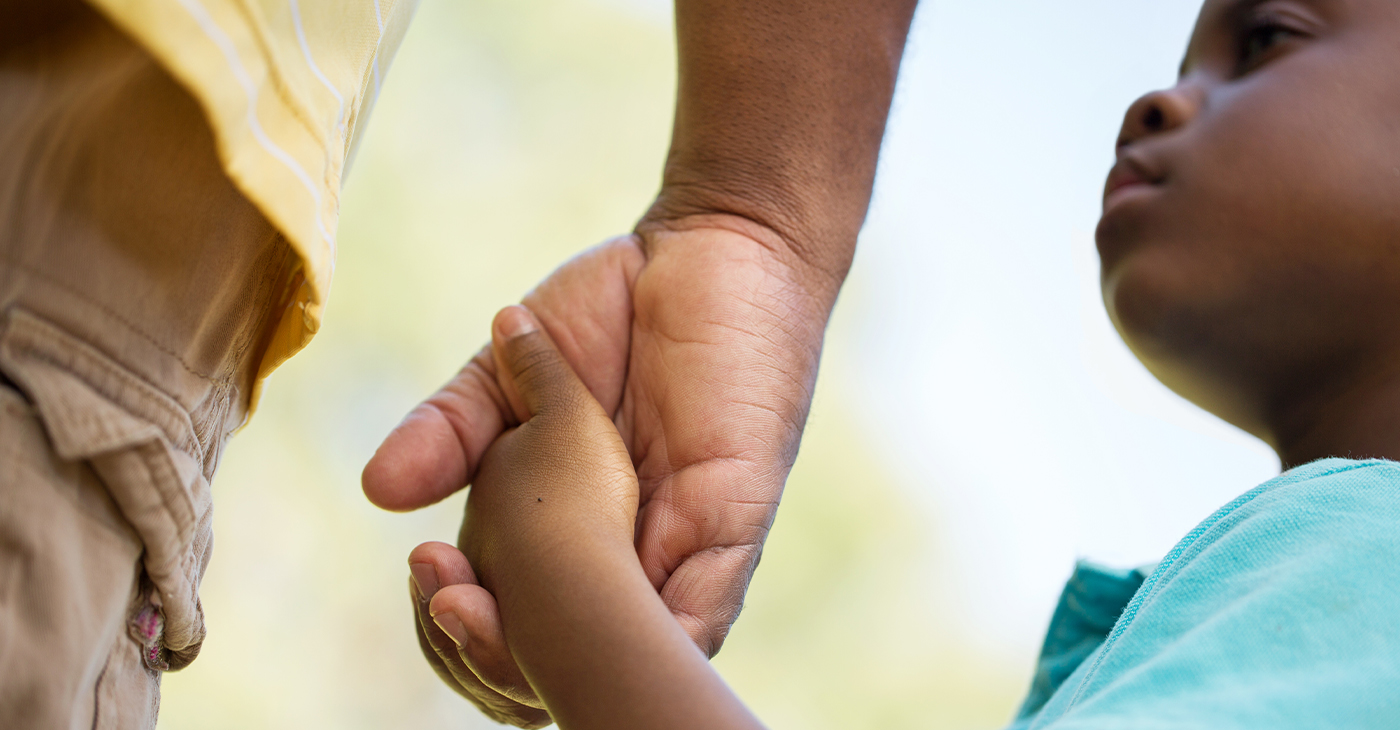
Racial inequalities in California’s child welfare system disproportionately impact poor Black and Native American children, according to a report released April 3 by the nonpartisan Legislative Analyst’s Office (LAO).
The report, which was presented to the Assembly Subcommittee No. 2 on Human Services — chaired by Assemblymember Corey Jackson (D-Moreno Valley) — states that the proportion of low-income Black and Native American children in foster care is four times larger than other racial and ethnic groups in the state. Half of the children from each racial group has experienced some level of child welfare involvement before reaching legal age.
Jackson is a member of the California Legislative Black Caucus.
“Racial and ethnic disproportionality and disparities are present within initial allegations and persist at all levels of the system — becoming the most pronounced for youth in care,” the report states.
The disparities have persisted over the last decade across the state, the LAO found, adding that Black children living in poverty are more likely to enter foster care. State data shows that there is a correlation between poverty and foster placement in each county.
“Throughout all levels of the child welfare system, families experiencing poverty are more likely to come to the attention of and be impacted by the child welfare system,” stated the report.
Overall, the report revealed that more than half of the families affected by the state child welfare system earn $1,000 per month, significantly less than the national average of $5,000 a month.
The financial disparities highlighted in the LAO report align with existing research indicating that poverty is among the main factors contributing to the likelihood of child maltreatment. State anti-poverty programs include cash aid, childcare subsidies, supportive housing, and nutrition assistance.
Activism
Hurlbut Benevolent Foundation Teams with RichmondWORKS to Feed Families
Over 300 families in Richmond received $100 food coupons during the holidays thanks to a partnership involving a local foundation and RichmondWORKS.
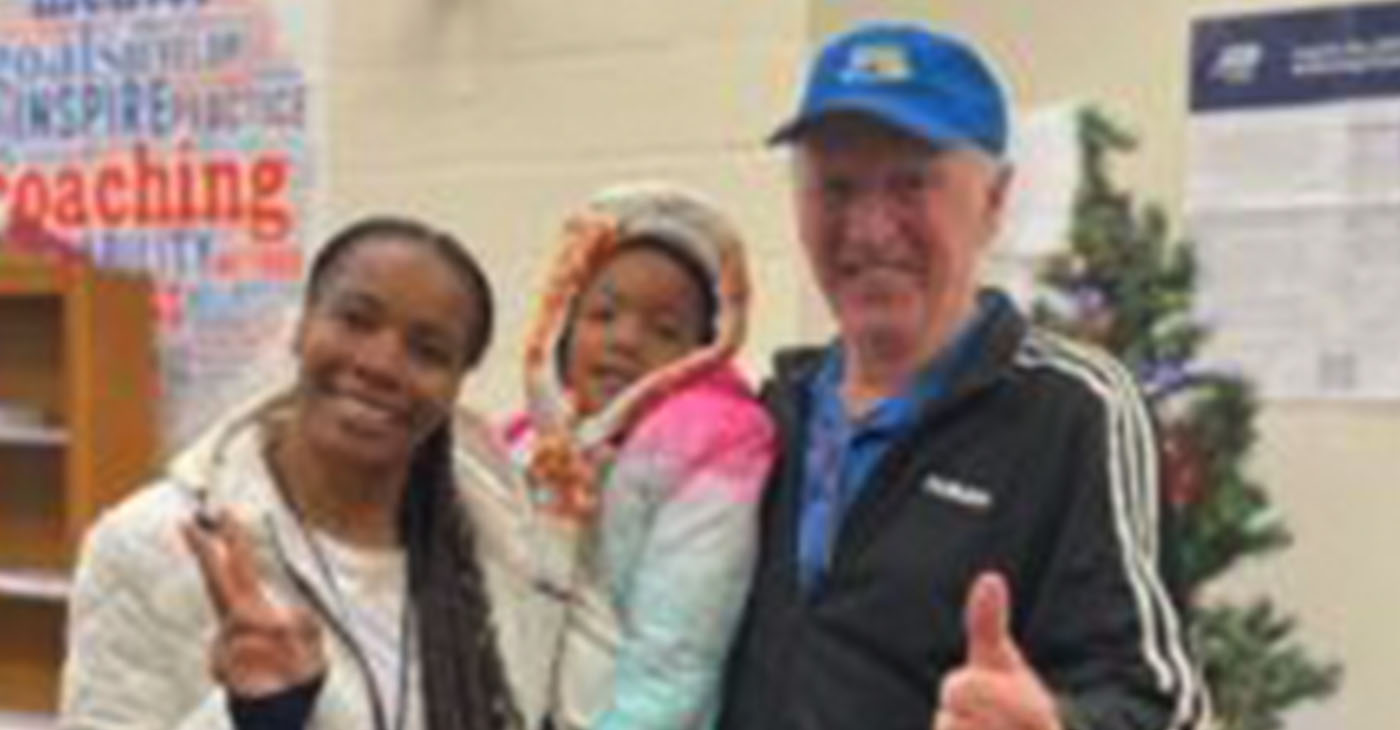
Richmond Standard
Over 300 families in Richmond received $100 food coupons during the holidays thanks to a partnership involving a local foundation and RichmondWORKS.
Richmond residents Maryn and Garry Hurlbut and the Hurlbut Benevolent Foundation (HBF) Board of Directors partnered with Bouakhay Phongboupha, program manager for RichmondWORKS, to make the distribution possible.
“Bouakhay and her staff have been able to identify some of the most needy families in Richmond who could make the best use of the supplemental food over the holiday season,” Garry Hurlbut said.
The Hurlbuts are retirees and Richmond residents who are very active in the community. One of the pair’s significant contributions is starting the Richmond Tennis Association, which significantly amplified tennis participation and facilities in the city.
-

 Activism4 weeks ago
Activism4 weeks agoOakland Post: Week of March 20 – 26, 2024
-

 #NNPA BlackPress3 weeks ago
#NNPA BlackPress3 weeks agoCOMMENTARY: D.C. Crime Bill Fails to Address Root Causes of Violence and Incarceration
-

 #NNPA BlackPress3 weeks ago
#NNPA BlackPress3 weeks agoMayor, City Council President React to May 31 Closing of Birmingham-Southern College
-

 #NNPA BlackPress3 weeks ago
#NNPA BlackPress3 weeks agoFrom Raids to Revelations: The Dark Turn in Sean ‘Diddy’ Combs’ Saga
-

 #NNPA BlackPress3 weeks ago
#NNPA BlackPress3 weeks agoCOMMENTARY: Lady Day and The Lights!
-

 #NNPA BlackPress3 weeks ago
#NNPA BlackPress3 weeks agoBaltimore Key Bridge Catastrophe: A City’s Heartbreak and a Nation’s Alarm
-

 #NNPA BlackPress3 weeks ago
#NNPA BlackPress3 weeks agoBaltimore’s Key Bridge Struck by Ship, Collapses into Water
-

 Activism3 weeks ago
Activism3 weeks agoOakland Post: Week of March 27 – April 2, 2024

